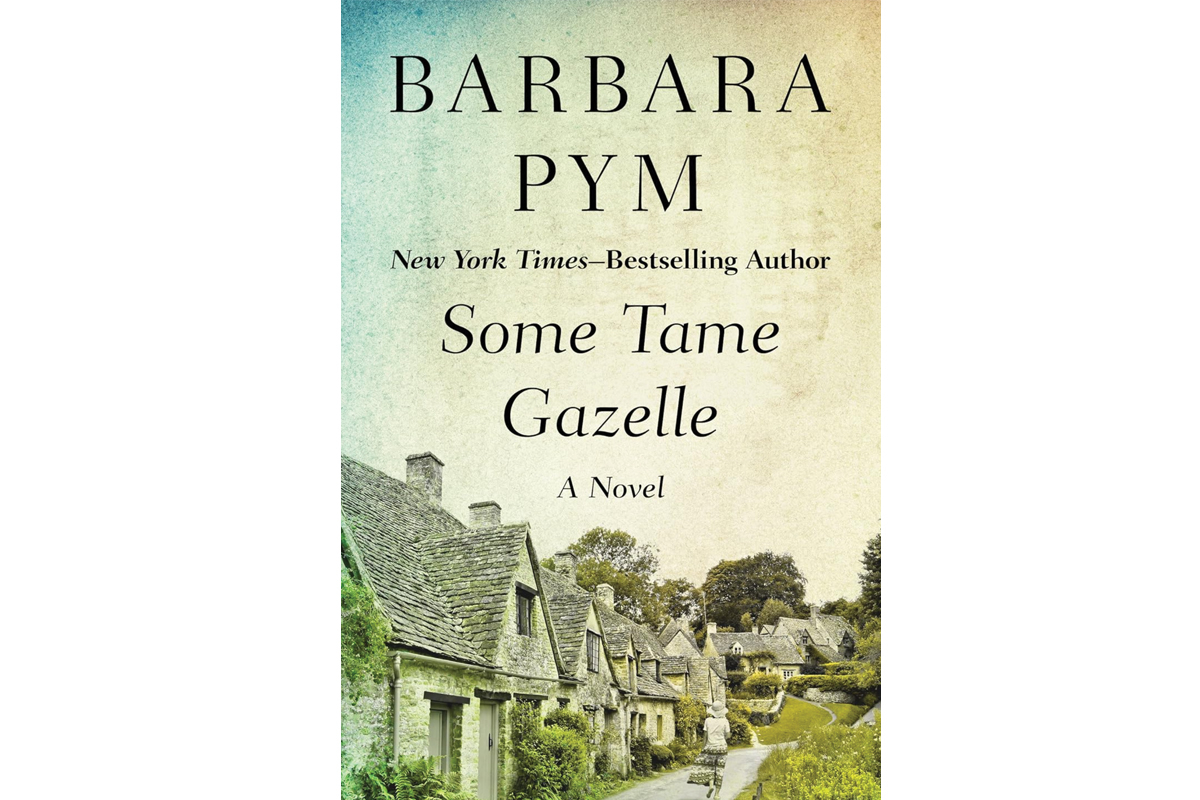Different ways to look at love

I had a book in mind to review for Valentine’s Day, but was hesitant to reveal the choice to my mentor and fellow reviewer Jeff Minick. Would it fit his idea of what a Valentine’s Day book should be?
“It’s a comedy,” I said, with a shrug.
His answer was quick. “So’s love half the time.”
I took that as acceptance, even endorsement, and I didn’t think it necessary to disclose the rest, that there is no romance in my book choice. Oh, well, sure, there’s a dash or two. A marriage happens, but it is between two minor characters, and we don’t see much of that relationship. Another two minor characters get engaged towards the end of the book. As the engagement is hasty and the two seem quite giddy for their age, we suspect that comedy lies ahead, but we can only guess. Romance, in this book, is not denigrated, but it is seen at a distance, which is an interesting perspective.
“Some Tame Gazelle,” published in 1950, still in print, by British author Barbara Pym, is not only my favorite comic novel, it’s my favorite novel, and it’s all about love, and also ordinary life.
It takes place in an English village. People walk. They walk to shop, they walk to church, and they meet each other on the street and talk. Or they avoid each other and don’t talk. Sometimes they are in a hurry. Lively, middle-aged Harriet is in a hurry when she meets the always dramatic Archdeacon Hochleve, who is in a mood to toot his own horn for visiting the poor. He tilts his head to one side and quotes a suitable stanza from Gray’s Elegy. “’Oh, quite,’ agreed Harriet, annoyed at being delayed,” and she engineers her escape. Being polite is important in an English village, but there are many amusing edges to politeness.
Related Items
It seems likely that the Archdeacon Hochleve achieved his high clerical rank thanks to good connections, his father-in-law being a bishop. What else could explain it? He is haughty and complaining, and doesn’t care for his fellow clergy. “His letter in this month’s parish magazine, announcing the arrival of the new curate, had a peevish and condescending tone that a stranger might have thought not quite the thing for an archdeacon.” In someone else’s novel he might well be the villain. “But the village was used to it.” And that’s the thing. The villagers will roll their eyes and make their comments, but they don’t make too much of him. His wife Agatha, polished and capable, not thought of as warm, is a well-matched partner. Theirs is an entertaining marriage to observe, the only marriage among the main characters.
The above-mentioned Harriet and her more conventional sister Belinda live together in a house near the vicarage. Belinda is supposedly modelled on the author, and we hear more of her thoughts than those of any other character. She seems the more sensible of the two sisters, but she worries too much, and, surprise, she has loved the Archdeacon for 30 years, since they were together at college. She defends his sermons and his behavior, but also sees some of the silliness, admitting at times “that he had very few of the obvious virtues that one somehow expected of one’s parish priest.” Her love for him has matured over the years, and though sometimes she talks herself into believing that she is content with her place in his life, as a special friend, sometimes she really is.
Author Pym makes fun of, or at least smiles at, every one of her characters, every one. That no one is spared, that none of the humor is mean, that we are shown good intentions and good deeds as well as foibles, makes it easy for the reader to find something of herself in every character. That’s what I did. Laughter can be freeing.
Harriet is the fun sister. She speaks her mind. She enjoys life. Her needlework consists of strengthening her corsets, because she loves to eat and she cares much for fashion and how she looks. She won’t go to the train station with the others to meet the visiting Bishop Grote, an eligible bachelor, because the day is bitter cold, thus not conducive to appearing elegant. She puts men at ease with her attentive energy, which sometimes verges, so thinks sister Belinda, on the improper. Yes, that is a mild version of “improper.” But it’s no wonder the gentlemanly, courtly, gallant, romantic, prone-to-melancholy Italian Count Bianco loves Harriet. And she loves him, too, just not for marriage.
Several of the characters “love” someone they are not with. Some feel unrequited “love.” Humans can’t define the word love and, to me, maturing means understanding love in ever broader, deeper ways. I think that is the main theme of Pym’s novel. The ability of a community to love, which I see as individuals caring for each other without being sanctimonious about it, is another theme. As for my favorite book being a comedy, I cannot imagine either love or the subject of love not including some measure of light-heartedness.
Life is not all fun and games. The author knows that. We know she knows, because of how the book ends. Something happens which causes us to worry. But the community acts in their usual and generally sincere church way, and we witness one beautiful display of light-heartedness. Will light-heartedness and strength of community win? We don’t know, but in Pym’s expert and non-sentimental yet compassionate hands, we have some faith that they will. They certainly have a chance. It’s my favorite ending of all endings.
Five years ago I did not know about Barbara Pym. If you haven’t tried her, and you like Jane Austen, she would be a safe bet. You might even find yourself agreeing with British poet Philip Larkin, who said, “I’d sooner read a new Barbara Pym than a new Jane Austen.”
I hope you have a lovely day.
(Anne Bevilacqua is a book lover who lives in Haywood County. This email address is being protected from spambots. You need JavaScript enabled to view it..)

















